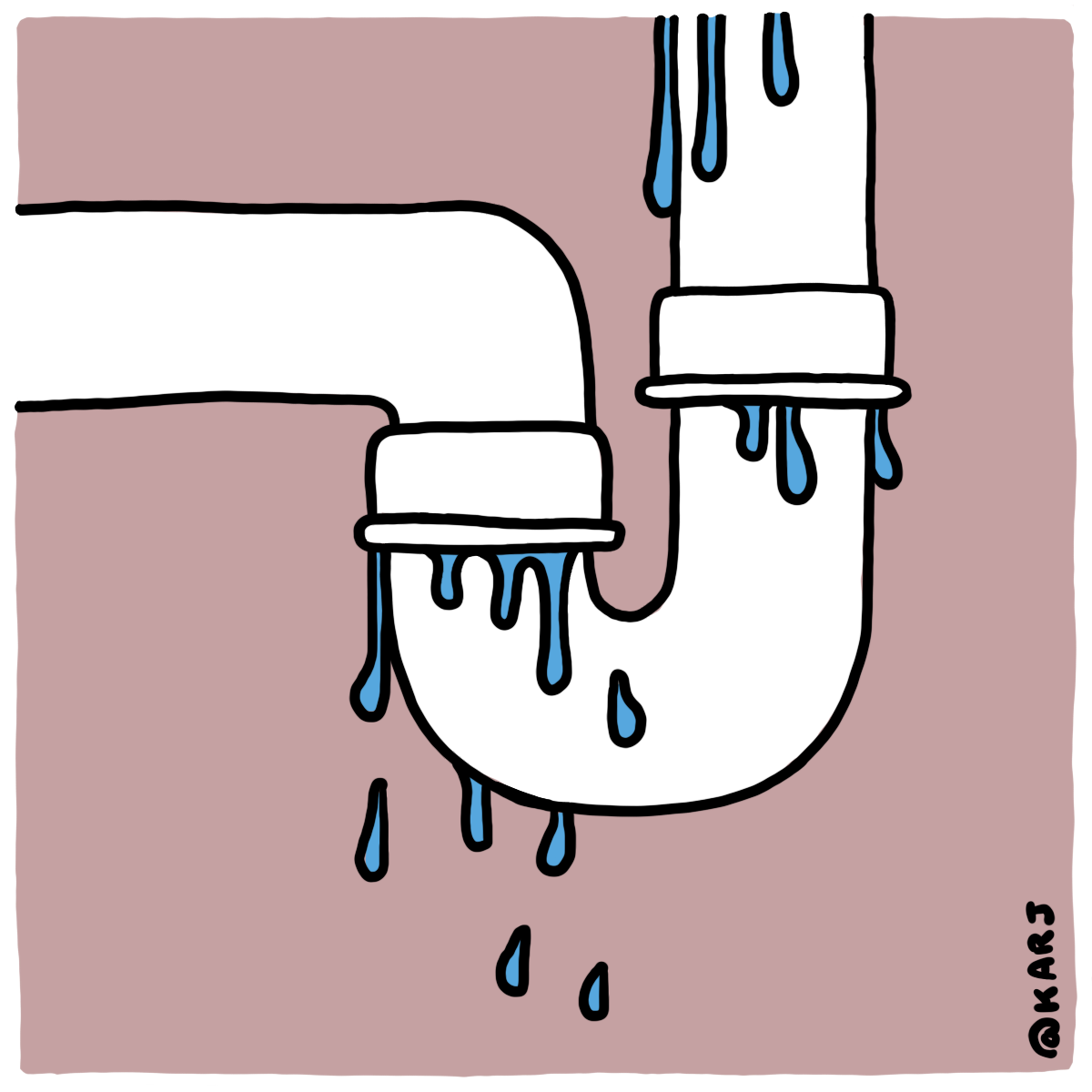There’s No Shortage of Design Work
TL;DR: Instead of competing to design visual assets, you should help design content. It is always in demand, requires ongoing attention, pays better—and no one else wants to deal with it.

Are you a designer who’s always chasing the next gig? If so, this post is for you. It fits with several articles I’ve written (like this one about client relationships, this one about getting paid in advance, and this one about giving clients the files) on my repeating theme of: you’re doing it wrong. If it makes you feel better, I’m doing it wrong, too. That said, I’m learning.
That’s the reason for this post: to propose a better path. You probably won’t like what I suggest. It offers no shortcuts and is in no way inspirational. It’s just a common-sense approach for working-class designers like me.
Project-driven design is problematic
Let me just say it: The design industry isn’t all it’s cracked up to be. In fact, a large part of it sucks. I’m not talking about the act of designing materials. I like that part as much as you do. I’m referring to the way our business works.
First off, it’s stupidly competitive. It isn’t uncommon for companies to shortlist ten or more designers/studios to pitch for one project. Those numbers put your odds of landing said gig at less than 1-in-10 (if you’re lucky enough to have been shortlisted).
If you win the gig, you’ll probably be hired to produce a set of assets (like a corporate identity). This is fine work, but it’s a one-night-stand. Once it’s over you’ll both go your separate ways. They’ll move on with their business, and you be out on the street looking for a new project.
What do they really need?
Most companies need brand design services, a new website, or an application built at one point or another. These aren’t frequent needs for most, though. Some might go for many years without requiring such work. That doesn’t mean they’re covered, though.
If you think about it, you realize that most businesses have certain ongoing needs. For example, they can always use more attention for what they’re doing. Most would welcome an increase in website traffic, inbound requests, or product sales. Meanwhile, almost all of them need to continually improve their customer experience.
There’s no end to this sort of work. Curiously, though, designers tend to ignore this need. They’re so busy thinking about designing beautiful things that they fail to ask what their clients actually need.
Do the part no one else feels like doing
I used to sell websites. Later, I sold corporate identities. I also sold web apps, community guides, ads, and a bunch of other items. At varying points we changed up this offering—but, we always talked about the things we made. This isn’t the greatest approach, because it fails to recognize that which is giving your client a headache. (Most will pay for you to remove a headache.)
An example: We built a tool that puts a newsfeed on company websites. It allows them to showcase new products, offers, and announcements. Some like the idea, but few have the time or inclination to produce content for yet another channel. So, I do it for them.
I create plans and publishing schedules. I research content, ghostwrite the posts, and prepare the associated images. If an announcement ties into an email campaign, I write that too. It ain’t glamorous, but it needs doing—and it pays. (I’ve probably earned more from populating companies’ newsfeeds than we’ve earned from this SaaS product.)
You already do all of this (or close enough)
I can already hear your objections: “I’m a designer—not a content strategist or writer.” Fair enough… but get over it. There are plenty of visual designers in the world, and neither you nor I are the best. Meanwhile, there’s a shit-ton of work that’s left undone—because designers don’t want to leave their lane.
The design of a logo happens infrequently and rarely leads to more work. Conversely, announcements about upcoming features, new staff members, company changes, and special offers are endless. Plus, those working in companies are too busy doing their jobs to make these announcements effectively. That’s where you come in.
Your distance/objectivity helps you spot notable stories. Your planning skills allow you to establish structure and pace releases. Your research capabilities set you up to assemble suitable content. Your storytelling know-how makes the content interesting. Your visual experience allows you to produce compelling visuals.
Are you an expert in each of these areas? Probably not. Don’t sweat it; I’m not either. You know who else isn’t? Your client. I’m pretty convinced they don’t want to do this work for themselves. Even more so, I bet they’d rather that you did a pretty good job of this than hire an expensive team to do it perfectly.
—
I’ve used the management and population of a newsfeed as my example for this post. That said, I don’t mean to suggest such a thing is necessary. Maybe it’s the wrong tool for your client. Could be they’re fine with using their Facebook and Twitter feeds. Maybe they want to stick with their email list. Or, they might have internal tools for communicating with their clients.
I don’t care which device you end up using. I just want you to recognize that there are lots of opportunities that are going unmet. In some of these situations, you’re nicely equipped to assist with this work. If you’re willing to roll up your sleeves and do the work, you’ll find that there’s plenty to do.
I’m @karj and the above is just my opinion. Looking for more? Here’s a full list of articles and information on my books. This is what I’m doing now, and what I don’t do. I’d love it if you tried Emetti on your website!